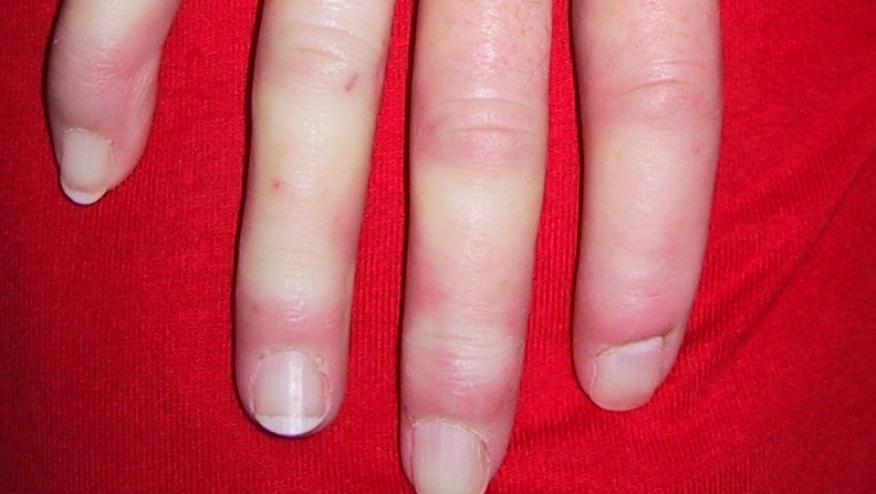Fatigue, HAQ and Hand Disability Correlated in Early Systemic Sclerosis Save

Early diffuse cutaneous systemic sclerosis (SSc) was associated with high levels of disability and fatigue, according to analysis of data from the European Scleroderma Observational Study cohort.
On the Health Assessment Questionnaire-Disability Index (HAQ-DI), patients' mean score was 1.1 at baseline, with the individual components having the most influence being hand grip and activity. A total of 39% and 49% of patients reported "much difficulty" or "unable" to answer questions about those two HAQ-DI components, according to Ariane L. Herrick, MD, of the University of Manchester in England, and colleagues.
And on the Functional Assessment of Chronic Illness Therapy fatigue score, the mean score was 30.2 at baseline, with 35.8% of patients reporting that they felt "quite a bit" or "very much" fatigue -- and 7.4% saying they were "too tired to eat," the researchers reported in Rheumatology.
Severe morbidity and mortality are associated with the diffuse cutaneous subtype of SSc, in which skin involvement involves the trunk or is proximal to the elbows and knees. The most widely recognized serious manifestations include involvement of the lungs, kidneys, and heart.
Less well recognized is the disability arising from the early skin manifestations of the disease -- thickening, tightening, and contractures -- which often compromise hand function and can seriously impede quality of life (QoL).
To examine these problems among patients with early diffuse cutaneous SSc, Herrick's group analyzed data among 326 patients from 50 centers recruited to the cohort from 2010 to 2014.
At baseline and at the 1- and 2-year visits, patients completed questionnaires about function, disability, fatigue, and pain.
Scores on the HAQ-DI at baseline ranged widely. While the mean score was 1.1, 16.3% of patients had scores below 0.15, indicating little or no disability, but 3.3% had scores exceeding 2.75, meaning severe disability.
Of the 230 patients who had baseline scores on the Cochin Hand Function Scale, the mean score was 18.7, with the greatest difficulties being reported for activities involving fine finger movements such as buttoning a shirt, picking up coins, and peeling fruit.
On the Medical Outcome Study Short Form 36 (SF-36) health-related QoL questionnaire, mean baseline scores on the physical and mental components were 36.9 and 38.5, respectively.
The researchers then analyzed clinical features of SSc that were associated with baseline disability, which included the use of corticosteroids, the presence of digital ulcers, pulmonary fibrosis, and cardiac and muscle involvement. Features that were associated with difficulties in hand function included corticosteroid use, digital ulcers, pulmonary fibrosis, and skin thickening.
Features that were associated with fatigue included corticosteroid use, pulmonary fibrosis, skin thickening, kidney and cardiac involvement, and high levels of C-reactive protein or erythrocyte sedimentation rate. Features associated with lower SF-36 physical component scores were use of corticosteroids, pulmonary fibrosis, and cardiac and muscle involvement, while characteristics associated with pain included cardiac and pulmonary involvement, skin thickening, and high levels of inflammatory markers.
The researchers also looked at potential correlations between changes in disability over time, and found that worsening scores on the HAQ-DI were associated with increased skin thickening (Spearman's ρ=0.40, P<0.0001), loss of hand function (ρ=0.57, P<0.0001), and greater fatigue (ρ= -0.53, P<0.0001).
Furthermore, loss of hand function was associated with greater fatigue (ρ= -0.50, P<0.0001), and a 5-unit increase in skin score was associated with a 0.15-unit increase on the HAQ-DI and a 1.58-unit increase on the hand function scale.
"Patients with the early diffuse cutaneous subtype of SSc have a particular set of problems, with rapidly progressive skin thickening (often with early contractures) and internal organ involvement," the researchers noted. "We have shown that this skin thickening is likely to be a key driver of disability, in large part through its effect on hand function."
Multidisciplinary treatment is needed for these patients, involving pain management, physiotherapy, and occupational therapy to address their large burden of disability.
"The message of our analysis is straightforward -- early diffuse cutaneous SSc is disabling, fatiguing, and associated with severe compromise in hand function and with pain. As options for treating the life-threatening organ-based complications improve, the non-lethal burden is likely to require increasing attention for therapy," they concluded.
The study was funded by the European League Against Rheumatism, and Scleroderma and Raynaud's UK.









If you are a health practitioner, you may Login/Register to comment.
Due to the nature of these comment forums, only health practitioners are allowed to comment at this time.